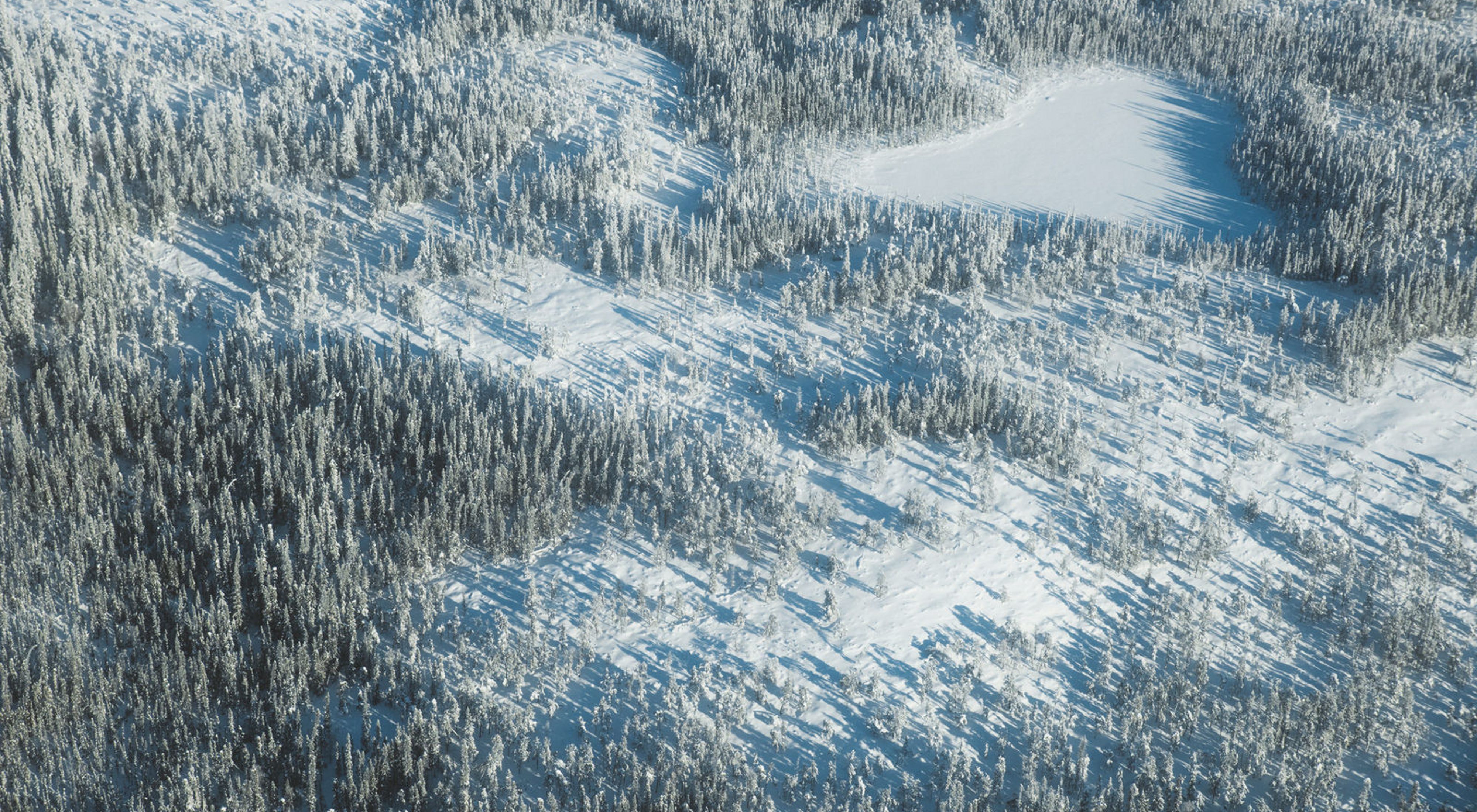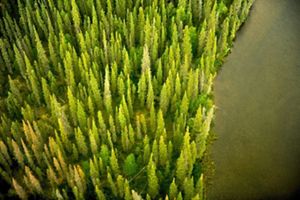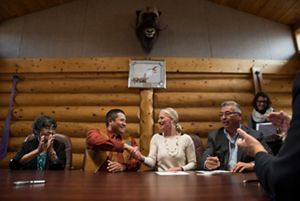Nature Based-Solutions Summit
Recognizing the Power of Nature—and Leadership in Canada—to Combat the Climate Crisis
When Diandra Bruised Head spoke to the 400-plus delegates of the Nature-Based Climate Solutions Summit in February about restoring grasslands in Blackfoot territory in Alberta, she talked about what is lost when we limit our focus to a single element of an ecosystem.
“[Our landscape] is more than just the benefit of sequestering carbon. We didn’t even talk about carbon. We don’t have any carbon economists on our reserve. It was about food security and how we’re adapting to climate change. And within these conversations, we’re understanding that everything connects.”
Hers was one of the valuable perspectives that shaped the dialogue at the two-day Summit in Ottawa, which was attended by leaders in conservation, government and the private sector, including Indigenous delegates from across Canada. Bruised Head works as the climate coordinator for the Blood Tribe Land Management department on the largest reserve in Canada, located near Lethbridge, Alberta.
The Summit
The impetus behind the summit—which was hosted by conservation organizations including Nature United—was to recognize the power of nature in combatting the climate crisis and to set a course for investing in natural climate solutions.
Natural Climate Solutions
Natural climate solutions involve conserving, managing and restoring forests, grasslands, agriculture lands and wetlands to deliver up to a third of the emission reductions needed by 2030 to mitigate the global climate crisis. Learn More
Science tells us that natural climate solutions can provide one-third of the emissions reductions needed to keep warming below 2 degrees Celsius, while delivering many other benefits to both nature and people. Minister John Wilkinson of Environment and Climate Change told the crowd: “Nature-based solutions give us the opportunity to tackle the challenges of climate change and biodiversity at the same time.”
He added that, “We can design our protected areas so they sequester and store carbon while providing species habitat, recreation and other benefits. We can invest in restoration and help species adapt to climate change while reducing our net emissions. We can deploy natural infrastructure that is resilient to climate change, enhances habitat and delivers necessary services like clean water to people.”
And yet these solutions only receive 3 percent of the funding and 1 percent of the attention.
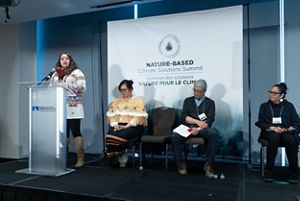
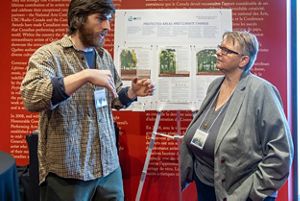
Building Momentum
If the Summit was any indication, attention around natural climate solutions is growing in Canada—and fast. Back when the organizing committee started working on the Summit last fall, we thought we’d be lucky to attract 100 attendees to expand the dialogue on this critical issue. By January, we were forced to close registration as it tipped past 400.
Topics over the two-day Summit showed the incredible diversity of issues, geographies and partnerships associated with natural climate solutions in Canada—from natural infrastructure to Indigenous Protected Areas, municipal leadership to restoration across different landscape types (forests, agriculture, wetlands, coasts and urban landscapes), and from mobilizing finance to Indigenous-led carbon offsets.
Leaders from across the federal government—from Natural Resources Canada, Environment and Climate Change Canada, and Infrastructure Canada—attended in true partnership mode, asking for advice and sharing information.
We watched as solutions emerged—as real as a tree in a forest, soil in a field, a salt marsh lining a beach.
Quote: Amanda Reed

We watched as solutions emerged—as real as a tree in a forest, soil in a field, a salt marsh lining a beach.
Advancing the Science in Canada
But while there is extraordinary potential for natural climate solutions—especially given Canada’s vast lands and waters—there are also many demands on our lands and waters. Forests provide fibre. Farms provide food. Species need habitat. Indigenous peoples have their own laws governing how to manage their lands and waters.
Nature United is currently leading a study with 16 Canadian institutions to quantify the potential emissions reductions of more than 20 pathways, including forests, agricultural lands, freshwater ecosystems and coastlines. Our science (slated to be published by fall 2020) will help decision-makers in government, industry and conservation prioritize investments in natural climate solutions, while balancing the many demands on our land.

Need for Leadership
Indigenous leadership is critical to advancing natural climate solutions. In fact, on day two of the Summit, Diandra Bruised Head read a statement on behalf of Indigenous delegates, noting that “Nature-based solutions are increasingly referenced in mainstream culture to describe how Indigenous peoples have and continue to interact with the land, water and all of creation.”
Indigenous Leadership Statement
Watch the full statement by the Indigenous Caucus, delivered at the Nature-Based Solutions Summit by Diandra Bruised Head of the Blood Tribe: Day 2 recording beginning at the 8:19 mark
The statement also recognized the opportunity of natural climate solutions to “facilitate fundamental change so that Indigenous knowledge and value systems can function with integrity and without being disrupted. Such systems are based on reciprocal and restorative understandings. We cannot shift Indigenous knowledge from one monolithic system to another. Nor can we misconstrue Indigenous knowledge as data or back-up.”
Our science will also support the federal government’s bold commitments to tackling the climate crisis. In addition to continuing to implement the nationwide Greenhouse Gas Pollution Pricing Act, the new government has committed to achieving net-zero emissions by 2050 and investing $3 billion in natural climate solutions.
And while the Summit barely scratched the surface on the innovative finance potential for natural climate solution and conservation, it was clear that there’s a big role for industry, including finance, insurance, forestry and agriculture.

Investment Now
The global climate crisis requires that we invest in natural climate solutions now. And in Canada, that means protecting the carbon stores in our boreal forest, restoring impacted lands across southern Canada, and protecting wetlands and coastlines, while also transitioning off fossil fuels and creating efficiencies in transportation, energy and buildings.
At their core, natural climate solutions are really about shifting our perspective on how we view, value and interact with the land and water. It’s about recognizing how actions to protect and restore nature also benefit people. And it’s about seeing how actions to mitigate climate change can also protect wildlife, build stronger and more resilient communities, and spur economic growth.
Undoubtedly, the Summit left its participants with hope that together—governments, conservation organizations, Indigenous leaders, private business—we can solve the climate crisis and create a future that unites nature and people.
